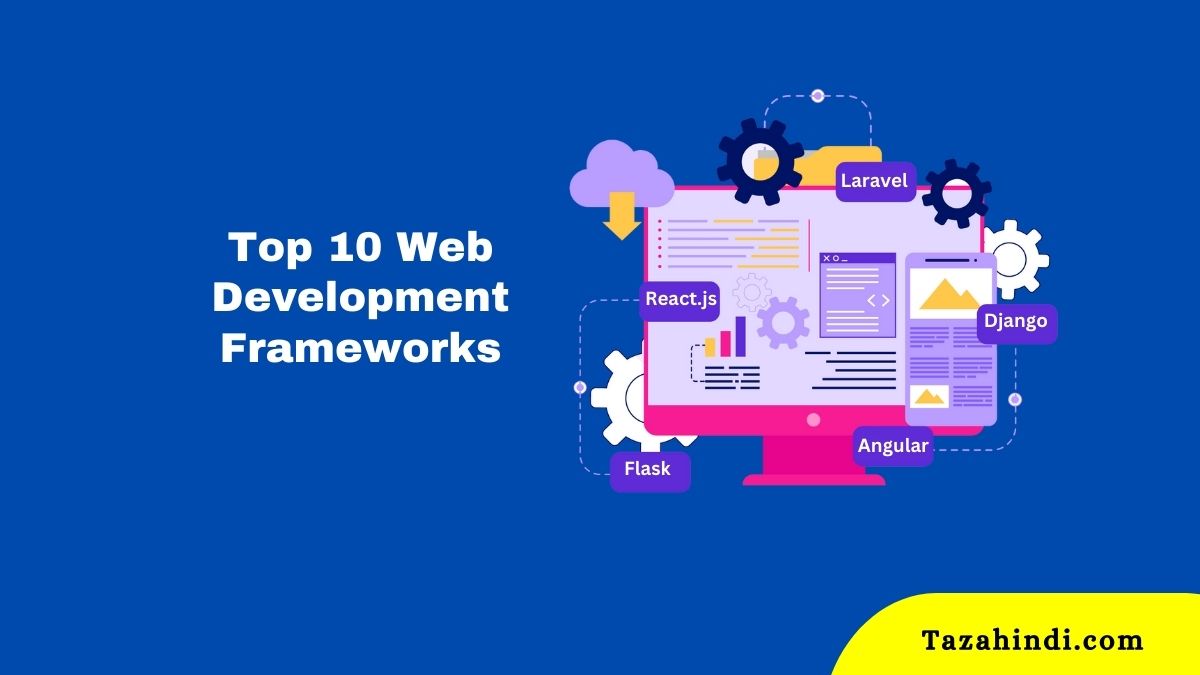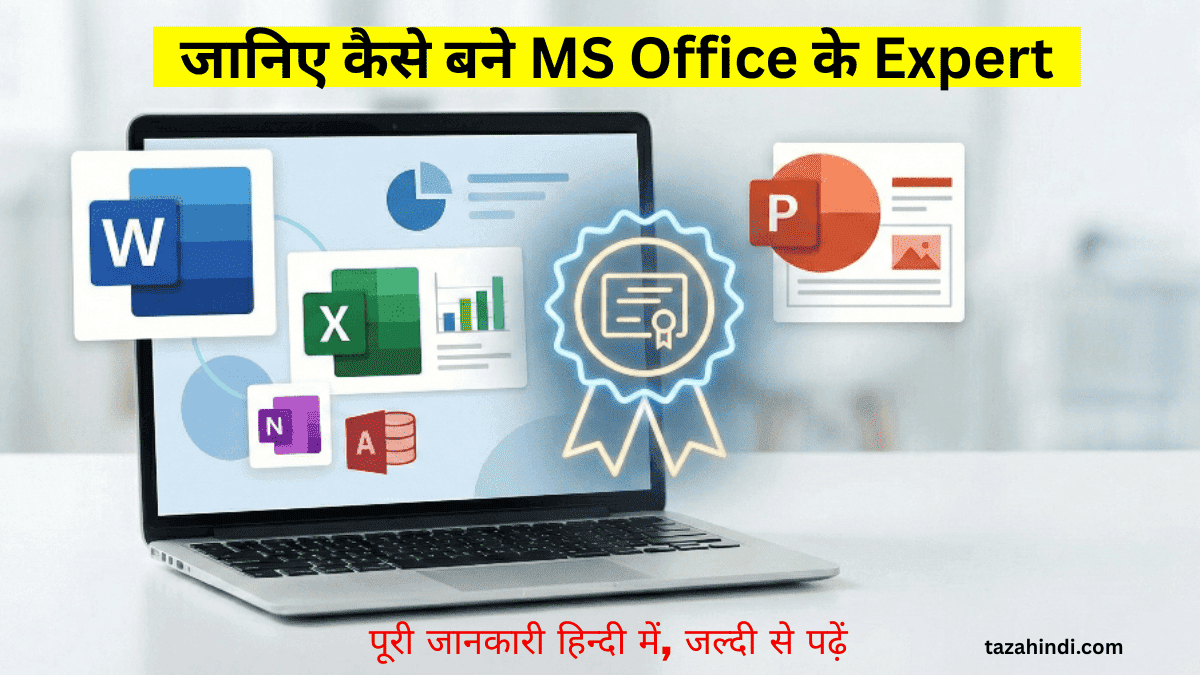What is a web development framework?
A web development framework is a set of pre-written code and libraries which are utilized to fabricate web applications, sites, and web services. These frameworks give a structure for developers to work inside, which permits them to focus on the particular usefulness of their application as opposed to worrying about the fundamental foundation. Web development frameworks give devices for dealing with normal web development undertakings, for example, steering, database access, and organizing.Significance of web development frameworks.
Web development frameworks have numerous advantages, including expanded profitability, quicker development time, and better maintainability. By utilizing a web development framework, developers can assemble applications all the more rapidly and with fewer blunders. These frameworks additionally give a structure that makes it simpler to keep up code after some time. Also, web development frameworks can give security highlights, for example, validation and approval, making it simpler to assemble secure applications.How to pick the top 10 web development frameworks?
Picking the top 10 web development frameworks can be a testing errand, yet there are a few criteria that can be utilized to evaluate each framework. The accompanying criteria are significant factors to consider when choosing the top 10 web development frameworks: Notoriety and Reception Rate The notoriety and reception rate of a web development framework are significant factors to consider when picking the top 10 frameworks. Well known frameworks have a bigger network of developers, which can give better help and documentation. Documentation and Support Documentation and support are basic factors to consider when choosing a web development framework. Great documentation can help developers rapidly learn the framework and get up to speed with its highlights. Moreover, great support can help developers tackle issues and get answers to questions. Flexibility and Scalability The adaptability and versatility of a web development framework are significant factors to consider when picking the top 10 frameworks. An adaptable framework can be tweaked to meet explicit requirements, while a versatile framework can deal with enormous measures of traffic and information. Highlights and Functionality The highlights and usefulness of a web development framework are significant factors to consider when picking the top 10 frameworks. The framework should have a wide scope of highlights that can be utilized to assemble mind boggling applications. Ease of Use and Learning Curve The ease of use and learning curve of a web development framework are important factors to consider when choosing the top 10 frameworks. The framework should be simple to utilize and have a shallow learning curve to permit developers to rapidly become beneficial. Also Read: How to Create a Website from Scratch using PythonTop 10 Web Development Frameworks
- React.js
- Angular
- Vue.js
- Laravel
- Ruby on Rails
- Django
- Express.js
- ASP .NET Core
- Spring Boot
- Flask
What is React.js?
React.js is an advanced JavaScript library that is highly appreciated by developers and used to construct user interfaces. It is maintained by Facebook and enjoys a large following among its user base. This library has a component-based architecture which makes it simpler to create reusable user interface components. Additionally, it offers great performance and can be effortlessly scaled up as per requirement.Features of React.js.
React.js equips developers with an array of tools and features to help them create complicated user interfaces. Here are some of the main characteristics of React.js:- Declarative Syntax: React employs a declarative syntax, making it easier to comprehend and code. With React, developers are enabled to work on scripts that depict the desired output instead of the processes needed to accomplish that output.
- Component-based Architecture: React uses a component-based architecture, which permits developers to subdivide complex UIs into small, recyclable components. This method helps in preserving and augmenting the performance of large applications.
- Virtual DOM: React works with a virtual DOM, a light-weighted version of the original DOM. This empowers React to update only the necessary elements of the user interface when a change occurs, thus providing quicker response time and greater efficacy.
- JSX: React implements JSX, a syntax extension that permits developers to embed HTML-like code in JavaScript. This makes it easier to craft complicated UIs and at the same time keeps the code neat and clean.
- Server-side Rendering: React permits server-side rendering which permits developers to render the UI on the server before it is sent to the client. This procedure helps to decrease the application’s initial load time and helps in improving its SEO friendliness.
- Unidirectional Data Flow: React works with a unidirectional data flow which means the data flows in a single direction, from the parent component to the child component. This approach makes it more comfortable to debug and identify issues in the application.
What is Angular?
Angular is a widely-used JavaScript framework employed in the creation of dynamic web applications. It is maintained by Google and has a large developer base. With its component-based architecture, Angular grants developers the resources they need to build comprehensive applications with superb performance and scalability.Features of Angular
Angular is written in TypeScript and comes with many noteworthy features, some of which are listed below:- Two-way data binding: With two-way data binding, alterations in the view data are immediately propagated to the component and vice versa. This facility streamlines code and makes maintenance simpler.
- Component-based architecture: Angular adopts a component-based approach, thus permitting developers to decompose complex UIs into separate, reusable parts. This style makes large applications easier to manage and extend.
- Dependency injection: The framework is furnished with built-in support for dependency injection which allows for managing dependencies effortlessly and results in components that are loosely coupled. This benefit contributes to enhanced testability and maintainability.
- Templating: With its powerful templating capacities, Angular provides developers the resources to generate dynamic and interactive UIs quickly and easily. HTML-based templating grants the use of expressions, directives, and filters for constructing intricate UIs.
- Reactive programming: Angular facilitates reactive programming, which allows for code that responds to changes in the state of the application. This methodology streamlines complex application logic and produces a better user experience.
- Cross-platform development: Developers can use Angular to create applications for web, mobile, and desktop platforms, saving time and money while reusing code.
What is Vue.js?
Vue.js is a prominent JavaScript framework employed for creating user interfaces. It is a lightweight platform which makes it simple to learn, thus, rendering it an optimal choice for novices. The framework utilizes a component-based architecture and has plenty of tools for assembling intricate applications. Moreover, Vue.js offers tremendous performance and is highly extensible.Features of Vue.js.
Vue.js has been structured with the aim of being effortless to use and comprehend, giving developers an array of instruments and features for developing current web applications. A few of its principal characteristics are highlighted here:- Responsive Data Binding: This attribute of Vue.js enables changes to be applied to data on the view, and such modifications will also be reflected on the component. In simpler terms, this implies that maintaining the code becomes a lot more manageable.
- Component-based Architecture: Utilizing this framework, developers can split down intricate User Interfaces into multiple, more workable components. Such an approach simplifies the task of maintaining and enlarging large-scale applications.
- Virtual DOM: To bring about faster and more effective changes, Vue.js applies a virtual DOM, which is a lightweight clone of the original DOM.
- Templating: This feature of the framework facilitates the production of interactive and dynamic User Interfaces. Expressions, filters, and directives are some of the building blocks that are part of the templating engine.
- Directives: Assembled with the framework are a series of directives such as v-if, v-for, and v-bind, to facilitate dynamic features with little effort.
- Vue CLI: To kick-start projects swiftly, Vue.js provides Vue CLI, which is a command-line interface tool.
What is Laravel?
Laravel is an extremely popular PHP framework used to develop powerful web applications and services. Its array of features and tools help to create intricate applications and also offers excellent documentation and a supportive community of developers.Features of Laravel
Laravel stands out due to its eloquent syntax, robust capabilities and scalability. Let’s have a closer look at some of the key features of Laravel:- Blade Templating Engine: Laravel provides the highly user-friendly Blade templating engine for building organized and reusable user interfaces. It includes features such as template inheritance, loops, and conditionals, making it a breeze to construct dynamic views.
- Artisan Command-Line Interface: Laravel has the integrated Artisan CLI, which offers an impressive set of commands to generate code, handle migrations and carry out tests. Artisan is the perfect assistant to make and manage Laravel applications.
- Eloquent ORM: With the Eloquent ORM, Laravel offers a convenient and eloquent way to communicate with databases. Eloquent is based on the Active Record pattern and simplifies mapping database tables to the application code.
- Security Features: Laravel features built-in protection from malicious cross-site scripting (XSS), cross-site request forgery (CSRF) and SQL injection attacks. Furthermore, it comes with integrated authentication and authorization systems to secure application resources.
- Routing: Laravel offers a simplified and adaptable routing system for assigning routes to controller actions, helping developers to easily craft neat and organized URLs for their applications.
- Queues: To keep applications responsive and highly scalable, Laravel utilizes a sophisticated queueing system that allows you to postpone time-consuming tasks like email sending and data processing.
What is Ruby on Rails?
Ruby on Rails is an acclaimed web application framework that is built with the Ruby programming language. It is structured around a “convention over configuration” approach which enables developers to rapidly and conveniently get started. Furthermore, it provides high performance and can be effortlessly scaled up to handle more requests.Features of Ruby on Rails
Below are some of the primary features of Ruby on Rails:- Convention over Configuration: Rather than expecting developers to specify every minute detail, Rails takes an opinionated stance, using reasonable assumptions and automatically applying these to an application’s structure. This minimizes the quantity of code which has to be written and leads to faster application building.
- Active Record: This Object-Relational Mapping (ORM) system enables developers to utilize classes to outline database tables and effortlessly perform create, read, update, and delete operations on these tables.
- Scaffolding: Rails’s scaffolding tool quickly generates fundamental code to facilitate the usual tasks, like creating, reading, updating, and deleting database records. This facilitates rapid prototyping and building of the basic application framework.
- RESTful Routing: Rails uses a RESTful routing system which ties HTTP requests to controller actions depending on the URL and the HTTP verb. This makes it effortless to produce well-organized, useful URLs for the application.
- Gems: With the RubyGems package management system, developers can easily add extra functionality to the application. There is a broad variety of ‘gems’ available which can be utilized for purposes like authentication, authorization, and email.
- Testing: The in-built testing frameworks of Test::Unit and RSpec provide developers the facility to easily create and execute tests for an application. This ensures that the application remains reliable and maintainable in the long-term.
What is Django?
Django is a renowned Python framework for constructing web applications and services. It has an efficient architecture for creating complex applications, such as authentication, routing, and database access. Furthermore, Django boasts of considerable documentation and a massive development community.Features of Django
These are the major features of Django:- Object-Relational Mapping (ORM): Django includes an impressive ORM system which lets developers communicate with databases by writing Python code. This system allows database tables to be defined as classes, allowing simple CRUD (create, read, update, delete) operations to be carried out on them.
- Admin Interface: Django’s built-in admin interface makes it effortless to manage the data of an application. It provides advanced features like search, filtering, and sorting.
- URL Routing: Django’s flexible URL routing system lets developers to utilize regular expressions to map URLs to views. This enables well-organized URLs for the application.
- Template Engine: Django’s powerful template engine allows for dynamic and reusable HTML templates. This system has the ability to employ template inheritance, conditional statements, loops, and filters.
- Built-in Security Features: Django has several in-built security features to defend against attacks like XSS, CSRF, and SQL injection. It also has its own authentication and authorization systems.
- Scalability: Django is highly scalable and can cope with large amounts of traffic. It is equipped with features such as caching, load balancing, and database sharding which optimize application performance, allowing it to stay efficient and capable of scaling.
What is Express.js?
Express.js is a prominent JavaScript framework for building modern web applications and services. It is light-weight and has a straightforward, sophisticated architecture for building web applications. Additionally, Express.js is acclaimed for its versatility and offers remarkable customization options. Additionally, it is accompanied by thorough documentation and a great community of developers.Features of Express.js
Express.js presents a collection of valuable features, including the following:- Middleware: Express.js includes a middleware system which allows developers to expand the capabilities of the application’s request-response cycle. Middleware can be applied to activities such as authentication, logging, and error handling, and therefore make it easy to add fresh features to an application.
- Routing: Express.js also has a basic, pliable routing system that enables developers to correlate HTTP requests to precise endpoints in their application. This function makes it effortless to design uncluttered and methodical APIs.
- Template Engines: Express.js sustains a broad range of template engines, including Jade, EJS, and Handlebars. These template engines deliver a straightforward and effective way to assemble flexible and reusable HTML templates.
- Error Handling: Express.js provides a built-in error handling system that empowers developers to control errors and exceptions in their application. This feature helps to maintain the stability and reliability of the application, even in the occurrence of errors.
- Static File Serving: Express.js facilitates an easy method to provide static files, for instance images, CSS, and JavaScript files. This feature makes it easy to assemble and publish web applications with a static frontend.
- Middleware Ecosystem: Express.js possesses a large and busy group of developers who have made a wide selection of middleware packages. These packages offer functions like authentication, caching, and compression, and can be quickly integrated into an Express.js application.
What is ASP.NET ?
ASP.NET is a renowned web application framework used to create web applications and services using the Microsoft .NET framework. It delivers a comprehensive range of characteristics and tools for forming complex applications, including authentication, routing, and database access. Furthermore, ASP.NET Core exhibits excellent performance and is immensely scalable.Features of ASP.NET
Here are some of the key features of ASP.NET:- Cross-Platform: ASP.NET is cross-platform and can be operated on multiple operating systems such as Windows, Linux, and macOS. This feature enables developers to build and deploy applications on their preferred platform.
- MVC and Web API Frameworks: ASP.NET includes two frameworks for building web applications, the MVC framework and the Web API framework. The MVC framework is used for designing traditional web applications, whereas the Web API framework is utilized for developing web services and APIs.
- Web Forms: ASP.NET also offers a web forms framework that is used for forming data-driven web applications. This framework is designed for fast application development and supplies developers with a drag-and-drop interface for assembling web forms.
- Integrated Development Environment (IDE): ASP.NET is accompanied by an integrated development environment known as Visual Studio. Visual Studio offers developers a range of tools and services for assembling and debugging applications.
- Performance and Scalability: ASP.NET is intended to provide high-performance and scalability for web applications. It offers features like caching, session management, and load balancing which can be used to improve the application’s performance and scalability.
- Security: ASP.NET offers multiple inbuilt security features such as authentication, authorization, and encryption. These features can be used to secure the application’s resources and guard it against attacks.
What is Spring Boot?
Spring Boot is a comprehensive and renowned Java-based framework used to develop web applications and services. It offers an array of advanced capabilities and tools to create complex applications such as authentication, routing and database access. What’s more, it provides ample documentation and a thriving developer community.Features of Spring Boot
The following are some of the chief features of Spring Boot:- Autoconfiguration: Spring Boot is furnished with an autoconfiguration feature that automatically configures the application depending on the included dependencies. This trait significantly lessens developers’ efforts by eliminating the necessity to manually configure the application.
- Embedded Server: With Spring Boot, an integrated web server, for instance Tomcat or Jetty, can be employed to build and execute web applications without requiring an external server.
- Actuator: The Actuator module is incorporated into Spring Boot which allows developers to monitor and manage the application during runtime. This feature permits developers to observe the application’s state, metrics, and other information.
- Spring Data: With Spring Boot, developers can conveniently construct data-driven applications thanks to its Spring Data integration.
- Security: Spring Boot contains integrated security features, including authentication and authorization, enabling developers to efficiently secure their web applications. Additionally, it supports linking with external security providers, such as OAuth and LDAP.
- DevTools: Spring Boot offers a range of DevTools that enhances the development process. These include a live reload option that mechanically refreshes the browser after changes to the application have been made, as well as an integrated H2 database for testing.
What is Flask?
Flask is a prevalent Python-based framework used to create web applications and services. It is lightweight and its design is straightforward yet graceful, perfect for constructing web applications. It is well-known for its versatility and offers abundant customizability. Additionally, Flask offers comprehensive documentation and a thriving developer community.Features of Flask
The following are some of the main features of Flask:- Lightweight: Flask is lightweight and was developed to be straightforward and convenient to use. Its concise coding needs less boilerplate, rendering it perfect for smaller and simpler web applications.
- Flexibility: Flask is incredibly flexible and can be used to create an assortment of web applications, from simple static sites to more complex web applications. It grants developers the ability to customize and augment the framework’s capabilities.
- Jinja2 Template Engine: Flask incorporates a potent template engine referred to as Jinja2, which facilitates developers to generate dynamic HTML pages easily.
- Routing: Flask offers a routing system that allows developers to associate URLs to distinct functions or views. This feature enables developers to construct intricate routing patterns for their web applications.
- Built-in Development Server: Flask incorporates a built-in development server which allows developers to rapidly and easily test their web applications during the development process.
- Extensions: Flask has a great number of extensions that can be employed to add functionality to web applications. These include support for databases, authentication, and many more.
Conclusion
Selecting the right web development framework is important for building high-quality web applications and services. The top 10 web development frameworks that we have discussed in this article are popular, well-documented, flexible, and scalable. By considering these factors when selecting a web development framework, developers can build complex applications more quickly and with fewer errors.FAQs Web Development Frameworks
Why are web development frameworks important?
Web development frameworks have several benefits, including increased productivity, faster development time, and better maintainability.
How do you select the top 10 web development frameworks?
The top 10 web development frameworks can be selected by considering factors such as popularity, documentation and support, flexibility and scalability, features and functionality, and ease of use and learning curve.
What are some popular web development frameworks?
Some popular web development frameworks include React.js, Angular, Vue.js, Laravel, Ruby on Rails, Django, Express.js, ASP.NET Core, Spring Boot, and Flask.



